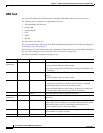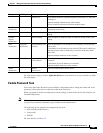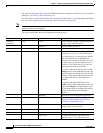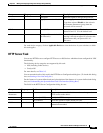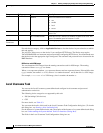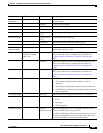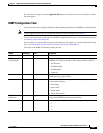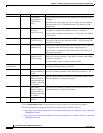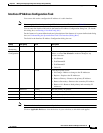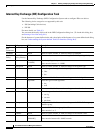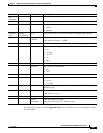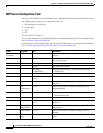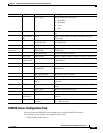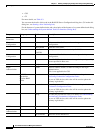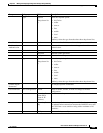
9-48
User Guide for Resource Manager Essentials 4.1
OL-11714-01
Chapter 9 Making and Deploying Configuration Changes Using NetConfig
Using System-defined Tasks
Click on Applicable Devices to view the devices in your selection, to which this task applies.
For more information regarding the IP addresses and IP multicast addresses refer to:
• http://www.cisco.com/en/US/products/sw/iosswrel/ps1835/products_configuration_guide_chapter09
186a00800ca75b.html
• http://www.cisco.com/en/US/products/sw/iosswrel/ps1835/products_command_reference_chapter09
186a00800ca76d.html
Last Memory
Query Interval
[100-25500 in
msec]
Enter the time interval between the IGMP specific messages sent by
the router.
Enter the last memory query interval in seconds. You can enter an
interval between 100—25500 milliseconds. The default is 1000
milliseconds.
Query Maximum
Response
Time[1-25 in sec]
Enter the maximum response time advertised in the IGMP queries.
This option is enabled when IGMP version 2 is configured.
You can enter a response time between 1—25 seconds. The default
is 10 seconds.
Query Interval
[1-65535 in sec]
Indicates a time interval when the Cisco IOS software sends IGMP
host queries. Enter a query interval between 1—65535 seconds. The
default is 60 seconds.
Query Timeout
[60-300 in sec]
Indicates the timeout period when the router takes over as a querier
of an interface after the previous querier stopped querying.
You can enter a value between 60—300 seconds. The default is 2*
Query Interval second.
Helper Address
(Should be in IP
address format)
Indicates the IP address that will receive all IGMP host reports and
where you can leave messages. This option is enabled when IGMP
version 2 is configured.
Enter the Helper Address in the IP Address format.
Group
Configuration
Action Select the required option to add values to, or to make no change to
the Group Configuration group of fields.
ACL to control
joining of Multicast
Group
Allows you to control the multicast groups. You can enter either the
IP access list name or number. The valid range is between 1 - 99.
Join Group
Multicast Address
(multiple addresses
should be separated
by commas)
Adds Join Group Multicast Address to the Multicast Address table.
Enter the addresses, separated by commas.
Static Group
Multicast Address
(multiple addresses
should be separated
by comma)
Adds Static Group Multicast Address to the Multicast Address table.
Enter the addresses, separated by commas.
Populate for all
Groups
Allows you to apply the configuration to all groups.
Group Sub-group Field Description



